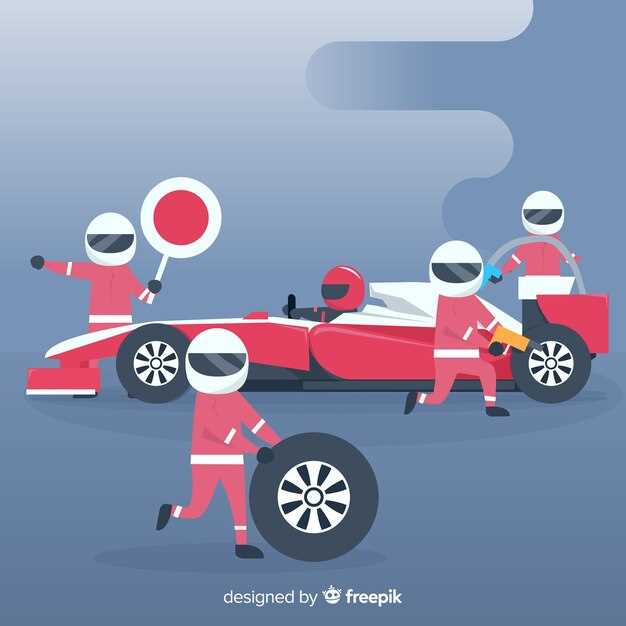
The history of NASCAR is a captivating journey through the world of motorsport, characterized by its unique culture, passionate fanbase, and significant milestones. Founded in 1948 by Bill France Sr., NASCAR emerged from the post-World War II era, during which modified cars raced on dirt tracks across the Southern United States. This grassroots origin laid the foundation for what would become one of the most popular motorsport organizations in the world.
Over the decades, NASCAR has undergone remarkable transformations that have shaped its identity and expanded its reach. From the introduction of stock car racing as a legitimate sport to the establishment of the prestigious NASCAR Cup Series, the organization has continually adapted to changing times and technologies. The evolution of racing styles, safety regulations, and fan engagement strategies reflects NASCAR‘s commitment to remaining relevant in an ever-evolving landscape.
As we explore the rich tapestry of NASCAR history, we will examine key milestones, iconic figures, and the socioeconomic factors that influenced its development. This journey not only celebrates the thrilling races and legendary drivers but also highlights how NASCAR has mirrored the cultural and technological advancements of society over the years.
Origins of NASCAR: Key Events and Influences
The origins of NASCAR can be traced back to the post-World War II United States, where a burgeoning interest in automobile racing began to take root. During this time, returning veterans sought recreational activities that could harness their driving skills and provide an adrenaline rush. Moonshining, which involved the illegal production and distribution of alcohol, played a significant role in the early racing culture. Many moonshiners modified their vehicles for speed and performance, using them to evade law enforcement while delivering their products.
In 1947, Bill France Sr., a mechanic and garage owner from Daytona Beach, Florida, recognized the potential for formalized racing. He gathered a group of local drivers and promoted a racing series to establish a set of rules and safety standards. This resulted in the formation of the National Association for Stock Car Auto Racing, known as NASCAR, in 1948. The first NASCAR-sanctioned race was held at the Daytona Beach Road Course on June 19, 1949, marking a significant milestone in the history of American motorsport.
NASCAR’s growth was heavily influenced by the popularity of stock car racing in the Southern United States, where local tracks flourished. The sport gained further traction with the introduction of the Grand National Series in 1950, which attracted drivers and fans alike. By the early 1960s, NASCAR had established itself as a mainstream sport, thanks to television broadcasts that helped to broaden its reach and appeal.
Key figures, such as Richard Petty, Junior Johnson, and Darrell Waltrip, emerged during this period, contributing to the sport’s popularity and competitive spirit. The establishment of the Daytona 500 in 1959 solidified NASCAR’s place in American culture and provided a premier event that drew fans from across the nation.
Throughout its development, NASCAR has also faced challenges, including competition from other racing leagues and the need to adapt to changing societal attitudes towards safety and technology. The sport’s ability to evolve while maintaining its core identity has been essential in ensuring its longevity. As NASCAR continues to grow, the foundational events and influences from its origins remain integral to its story and ongoing legacy.
The Development of Safety Regulations in NASCAR Racing

The transformation of safety regulations in NASCAR racing has been a critical aspect of the sport’s evolution. Over the decades, the organization has faced numerous challenges that prompted changes in its approach to driver and spectator safety. Early NASCAR events were characterized by minimal oversight regarding safety measures, leading to a series of tragic incidents that highlighted the necessity for a more robust regulatory framework.
In the 1950s and 1960s, the inherent dangers of high-speed racing were often overlooked. Drivers raced in open cars with limited protective gear. Following several serious accidents, including the fatal crash of driver Tiny Lund in 1975, NASCAR began to formally address safety. The introduction of mandatory helmet use and the implementation of more stringent vehicle inspections marked the early stages of safety evolution.
The 1980s and 1990s saw a significant shift as NASCAR began to adopt a more proactive stance on safety regulations. The establishment of the NASCAR Safety Committee in 1989 underscored this transformation. This committee’s efforts led to improvements in car design, such as the introduction of the crush zones and the mandated use of five-point harnesses, which drastically reduced the risk of injury during crashes.
A major turning point came in the early 2000s after the death of Dale Earnhardt in 2001. This tragedy acted as a catalyst for an extensive overhaul of safety protocols. NASCAR implemented the use of the Head and Neck Support (HANS) device, designed to prevent head and neck injuries during collisions. Additionally, NASCAR invested in safer track surfaces and redesigned barriers, which have significantly mitigated the impact of crashes.
In recent years, NASCAR has continued its commitment to safety with innovative technologies such as the SAFER (Steel and Foam Energy Reduction) barrier, which helps absorb energy during collisions. Ongoing research and collaboration with medical experts ensure that safety protocols evolve in line with advancements in automotive technology and injury prevention.
Today, NASCAR is recognized not only for its thrilling races but also for its leadership in safety regulations within motorsports. The ongoing transformation of safety measures reflects a commitment to protecting drivers, crews, and fans alike, ensuring that the sport remains both exciting and safe.
Technological Advances that Shaped Modern NASCAR

NASCAR has undergone significant transformation over the years, largely driven by technological advances. These innovations have improved both the performance of the cars and the safety of the drivers, fundamentally changing the sport.
One major advancement is the evolution of aerodynamics. The introduction of wind tunnel testing allowed teams to refine car shapes, reducing drag and enhancing downforce. This innovation has led to faster lap times and more competitive racing, changing the dynamics of how teams approach vehicle design.
Another critical area of development is the incorporation of advanced materials. The shift from traditional steel to lighter, composite materials has enhanced the structural integrity of cars while also decreasing their weight. This change has contributed to improved speed and fuel efficiency, allowing for longer stints during races.
Moreover, the integration of cutting-edge electronics has vastly improved communication between drivers and pit crews. Real-time data analytics enable teams to monitor numerous variables, such as tire pressure and engine performance. This data-driven approach allows for more strategic decision-making during races, significantly impacting race outcomes.
Safety technologies, such as the Car of Tomorrow (CoT) introduced in the mid-2000s, have redefined standards in the sport. Features like a reinforced safety cage, energy-absorbing barriers, and improved seat designs have drastically reduced injuries during accidents. The introduction of these safety measures reflects NASCAR’s commitment to protecting its drivers amidst the rigorous demands of racing.
In summary, technological advances have played a pivotal role in transforming modern NASCAR. From aerodynamics and materials to data analytics and safety measures, each innovation contributes to a faster, safer, and more strategic racing environment.




